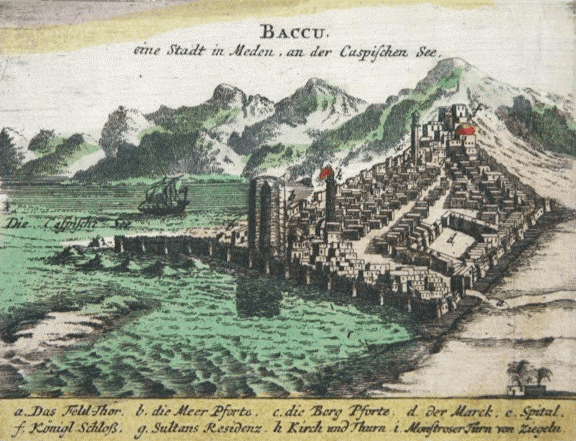History

Before the 1800s: Ancient Maritime Trade
Although maritime trade has been one of the main activities in Baku since ancient times, according to reliable sources, the port in this city began to operate in the 1500s. In 1564, Sheikh Zahid was appointed the first minister of the Port of Baku by the decree of Shah Tahmasib I from the Safavid dynasty. In the late 1600s, Indian merchants traveled through the city of Ardabil, which is now considered the territory of Iran, to the main trading centers of the state, Shamakhi and Baku. About 200 Indians lived in the settlements around this city. This region attracted them with such valuables as silk, oil, salt, fish, horses and jewelry. Documents dating back to the mid-1600s indicate that a group of Indian traders arrived in the cities of Shamakhi and Baku with Russian goods such as animal fur, copper and caviar. From these cities, through Afghanistan, goods were delivered by caravan to India or to the Persian Gulf.

1800s: Military and Commercial Port
On 17 September 1854, by a decree of Nicholas I of Russia, the port of Baku was transformed into a naval port. Since then, the port functioned both as a trading point and as a military center providing maritime defense. Since 1858, ships of the Caspian Sea Fleet of the Russian Empire were stationed in the port. The depth of coastal waters, favorable weather conditions and nearby oil fields made the port an ideal location for a naval base. After the devastating earthquake in Shamakhi in 1859, Baku became the center of the province of the same name. The population of the Baku province increased rapidly. In 1861, the medieval coastal fortifications were demolished to make way for a larger harbor and customs house on the coast.

1900s: The World’s Leading Port
The construction of the port in the city of Baku began in the middle of the 19th century, during the reign of the Russian Empire; on 21 July 1902, it officially began to operate as an independent port. It was one of the leading ports in the world and the largest cargo and passenger port in the Russian Empire. According to the statistics of 1905, the Port of Baku was the largest port in the Russian Empire in terms of cargo transportation, through which six million tons of cargo were transported at that time. From 1923 to 1924, trade through the port accounted for 27.3% of the total volume of cargo transported throughout the Soviet Union. Baku became the leading port of the USSR on the Caspian Sea. In 1963, a new ferry terminal was put into operation, and then a bridge was built to serve passengers. These projects were completed in 1972 with the construction of a new passenger terminal building.

2014: Opening of the ferry terminal within the first phase of the Baku International Sea Trade Port Complex
22 September 2014 - In frames of the initial stage of Baku International Sea Trade Port Complex, the opening ceremony of Ferry terminal took place. The President of the Republic of Azerbaijan H.E. Ilham Aliyev participated in the opening ceremony.

2018: Opening of Port of Baku
On 14 May 2018, the opening ceremony of the Port of Baku was held in the Alat settlement with the participation of the President of the Republic of Azerbaijan H.E. Ilham Aliyev. The largest port of the Caspian Sea can handle up to 15 million tons of cargo per year, including 100,000 TEU containers. On 8-11 May 2018, at the initiative of the Port of Baku, for the first time on the Eurasian continent, the IAPH World Ports Conference 2018 was held in Azerbaijan. The main topic of the conference, which was attended by more than 400 delegates from 65 countries, was Ports of the Future: Creating Hubs, Speeding Up Communications.




